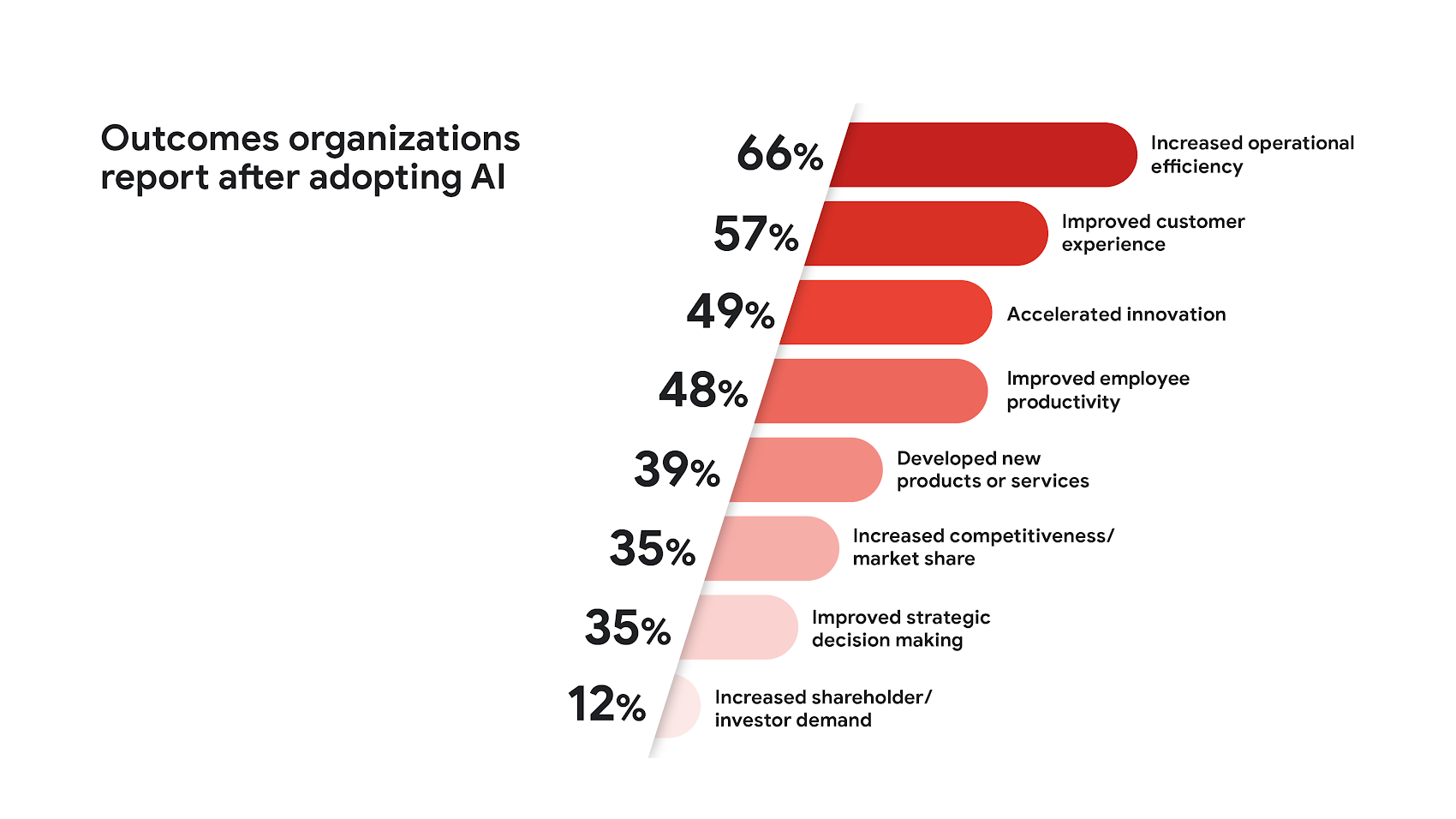What's your prompt? Introducing "The executive's guide to generative AI"

Philip Moyer
Global VP, AI & Business Solutions at Google Cloud
Michael Endler
AI Editor, Google Cloud
Here's 10 steps, and lots of other important guidance from Google experts and partners, on how to jumpstart generative AI across your organization.
Not even a year ago, generative AI was a barely recognized concept. Today, it’s one of the biggest, fastest-moving forces in all of technology and a part of every executive’s agenda.
But many leaders face a dilemma.
They recognize generative AI as a potentially epochal technology, capable of changing virtually everything about how organizations operate. They also know they need to get adoption rolling. And yet at the same time, no organization can turn on a dime when adopting a new technology, least of all one that involves unfamiliar paradigms that only reached enterprise-caliber status in the last few months.
Meeting the opportunity will clearly be a long-term challenge, but in the immediate term, just getting started is difficult in its own right.
It's this sense of urgency and need that led us to develop our new ebook, “The executive’s guide to generative AI.” Developed with input across Google Cloud and feedback from our customers, it distills what we’ve learned about generative AI into an executive-level guide, outlining best practices we’ve observed and trends across industries.
With that in mind, we wanted to share some initial advice here to help frame your plans as you envision your organization’s generative AI journey.
Start with a specific domain
As noted, you’re not going to boil the ocean overnight, so step one is homing in on a specific domain that could benefit from generative AI, such as customer service, patient intake, corporate actions, or creation of marketing content. To choose, think about questions like the following:
Where do your employees spend significant time on repetitive tasks? Where do employees follow standardized processes?
Generative AI can be used to automate or accelerate these tasks, such as synthesizing information from different sources or manual information entry. This efficiency can free up employees to focus on higher-value, more creative or strategic work.
Are there areas where employees get stuck in the creative process?
Generative AI can help employees generate ideas, overcome writer's block, and iterate on different concepts, giving them an always-on collaborator off which to bounce ideas.
In which areas could an incorrect response or hallucination cause harm? Which areas of the business offer a low-risk environment for initial use cases?
Generative models are rooted in probabilities, which means they can sometimes output inaccurate information or “hallucinate” nonsensical content (a challenge we’ve explored before). The more mission-critical accuracy is, the more complicated the architecture of an intelligent app can become. Because the underlying model itself does not guarantee accuracy, developers may need to develop new skills, such as grounding and information retrieval techniques to shape the model’s outputs with specific data.
If your company is developing competency with generative AI, bear in mind whether a use case requires creativity or accuracy, and consider using internal projects to build expertise before exposing new technologies to customers.
Does the organization have a large corpus of data that can be activated or made more useful? Are there areas where employees consistently have to search for existing information?
Generative AI can be used to analyze large amounts of data and generate insights that would be difficult or impossible for humans to find, such as insights locked in unanalyzed data or common threads across a series of reports or articles. This analysis can be used to create knowledge bases or search engines that make it easier for employees to find the information they need.


Source: Google Cloud research surveys
Think about specific personas
After targeting a domain, next consider the job functions you want to make more productive. That could be human agents using generative AI to better resolve customer service questions or copywriters leveraging the technology to scale up marketing messages.
One category I’ve repeatedly seen companies successfully target: job roles that are hard to retain. Such roles often involve repetitive and dissatisfying tasks, so employee happiness, productivity, and retention can improve when generative AI helps minimize drudgery and enable more opportunities for strategic, human judgment.
For example, the multi-trillion dollar pre-authorization industry in healthcare can be very frustrating for patients, with hours or even days required to get authorization for a simple MRI or specialist visit, largely because the process often remains paper-based. Investment memorandums are another example, with the same information gathered over and over again.
Generative AI can help accelerate routines such as these, empowering employees to work on more fulfilling tasks and letting customers enjoy the benefits of more efficient processes.
One category I’ve repeatedly seen companies successfully target: job roles that are hard to retain. AI helps minimize drudgery and enable more opportunities for strategic, human judgment.
Take the next steps
The preceding should help you establish the right state of mind to visualize your company’s entry into generative AI — but these are just the first steps. In our ebook, you can also learn how businesses across different industries are using generative AI, as well as how to:
- Determine the data sources your target persona needs to be productive
- Create a tiger team to develop your generative AI pilot
- Define objectives, goals, outputs, and OKRs
- Design prompts as well as UX and UI considerations
- Build an operations plan for working with and managing large machine learning models
Expand pilot usage to more people and use cases
You can access the ebook for more details on jumpstarting generative AI. And for even more insight into how organizations are innovating with generative AI, check out our interview with the leaders of five of the biggest AI “unicorns.”
Opening image created with Midjourney, running on Google Cloud, using the prompt: A mixed group of execs looking at a guide to generative ai in Bauhaus style.



